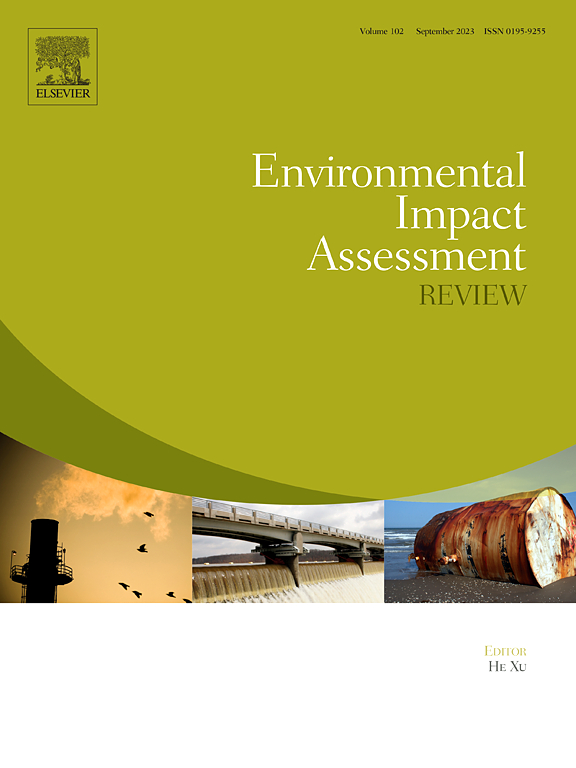Rising disparities in grain self-sufficiency across China: Provincial divergence amidst overall national improvement
IF 9.8
1区 社会学
Q1 ENVIRONMENTAL STUDIES
引用次数: 0
Abstract
Food security is essential to the sustainability of any society. China's food security not only matters to itself, but also to the rest of the world. However, it remains unclear whether China, especially its internal provinces, has achieved or will achieve grain self-sufficiency – a central component of its national food security. This study assessed China's grain self-sufficiency ratio (GSSR) from 2000 to 2030 by quantifying grain production and demand at national, regional, and provincial levels. Combining machine learning and modeling methods, the impacts of climate change and geospatial heterogeneity in biophysical and demographic conditions on China's grain self-sufficiency were assessed. The results show that from 2000 to 2020, China's grain production increased faster than its demand, with GSSR exceeding 95 % after 2012. This trend is projected to continue, reaching 118 % by 2030. However, regional disparities in grain production will widen, with China's grain self-sufficiency becoming highly dependent on the northeast and a few key provinces. This divergence is driven by rising yields in major grain-producing provinces, where population decline and aging reduce consumption. In contrast, eastern provinces face growing demand due to population increases, while local production continues to fall. Farmland loss and climate change further increase future food security uncertainty. While farmland protection is necessary but not sufficient. Strengthening agricultural technology and implementing climate adaptation strategies are also necessary. This study offered a comprehensive, multi-scale evaluation and prediction of China's GSSR, incorporating future climate, land-use changes, and population dynamics. The findings highlighted growing regional disparities as a key uncertainty in China's future food security.

中国各地粮食自给率差距扩大:全国粮食自给率总体提高,但各省情况不一
粮食安全对任何社会的可持续性都至关重要。中国的粮食安全不仅关系到中国自身,也关系到世界。然而,目前尚不清楚中国,尤其是内陆省份,是否已经或将实现粮食自给自足——这是中国国家粮食安全的核心组成部分。通过对2000 - 2030年中国粮食自给率(GSSR)在国家、地区和省级层面的产量和需求进行量化评估。结合机器学习和建模方法,评估了气候变化、生物物理和人口条件的地理空间异质性对中国粮食自给的影响。结果表明:2000 - 2020年,中国粮食产量增长快于需求增长,2012年后GSSR超过95%;这一趋势预计将持续下去,到2030年将达到118%。然而,粮食生产的地区差异将扩大,中国的粮食自给将高度依赖东北和几个重点省份。这种差异是由主要粮食生产省份的产量上升推动的,这些省份的人口减少和老龄化减少了消费。相比之下,东部省份由于人口增长而面临需求增长,而当地产量继续下降。耕地流失和气候变化进一步增加了未来粮食安全的不确定性。而农田保护是必要的,但还不够。加强农业技术和实施气候适应战略也是必要的。结合未来气候、土地利用变化和人口动态等因素,对中国GSSR进行了综合、多尺度的评价和预测。调查结果突显出,日益扩大的地区差异是中国未来粮食安全的一个关键不确定因素。
本文章由计算机程序翻译,如有差异,请以英文原文为准。
求助全文
约1分钟内获得全文
求助全文
来源期刊

Environmental Impact Assessment Review
ENVIRONMENTAL STUDIES-
CiteScore
12.60
自引率
10.10%
发文量
200
审稿时长
33 days
期刊介绍:
Environmental Impact Assessment Review is an interdisciplinary journal that serves a global audience of practitioners, policymakers, and academics involved in assessing the environmental impact of policies, projects, processes, and products. The journal focuses on innovative theory and practice in environmental impact assessment (EIA). Papers are expected to present innovative ideas, be topical, and coherent. The journal emphasizes concepts, methods, techniques, approaches, and systems related to EIA theory and practice.
 求助内容:
求助内容: 应助结果提醒方式:
应助结果提醒方式:


